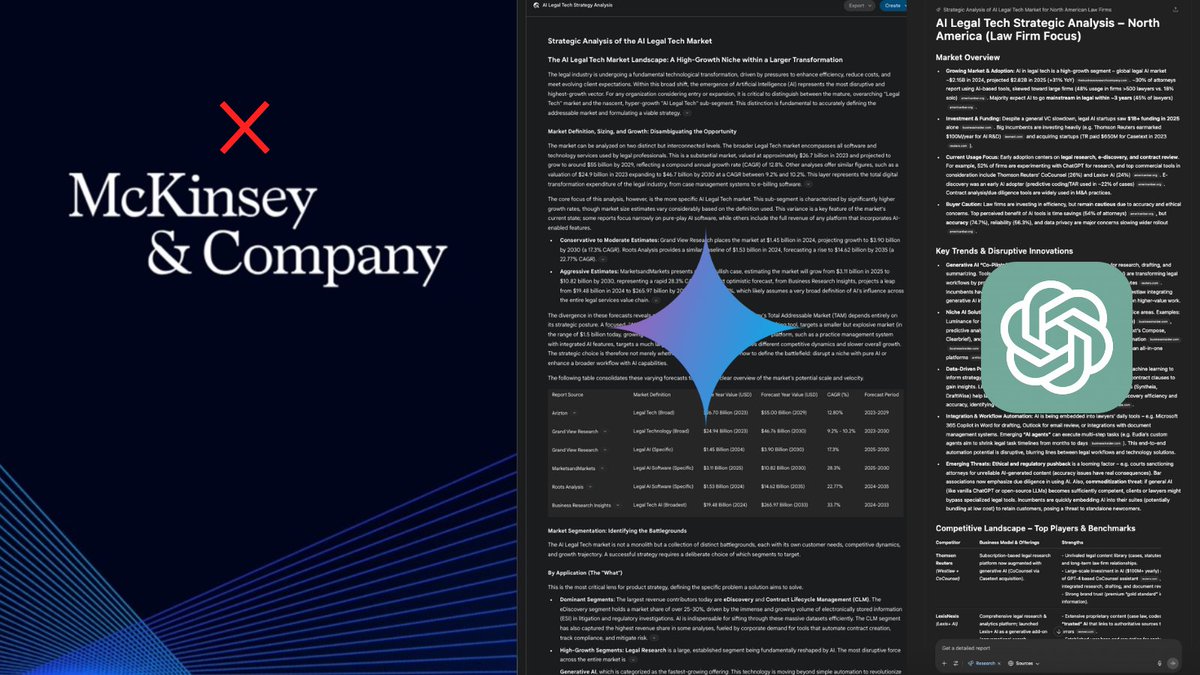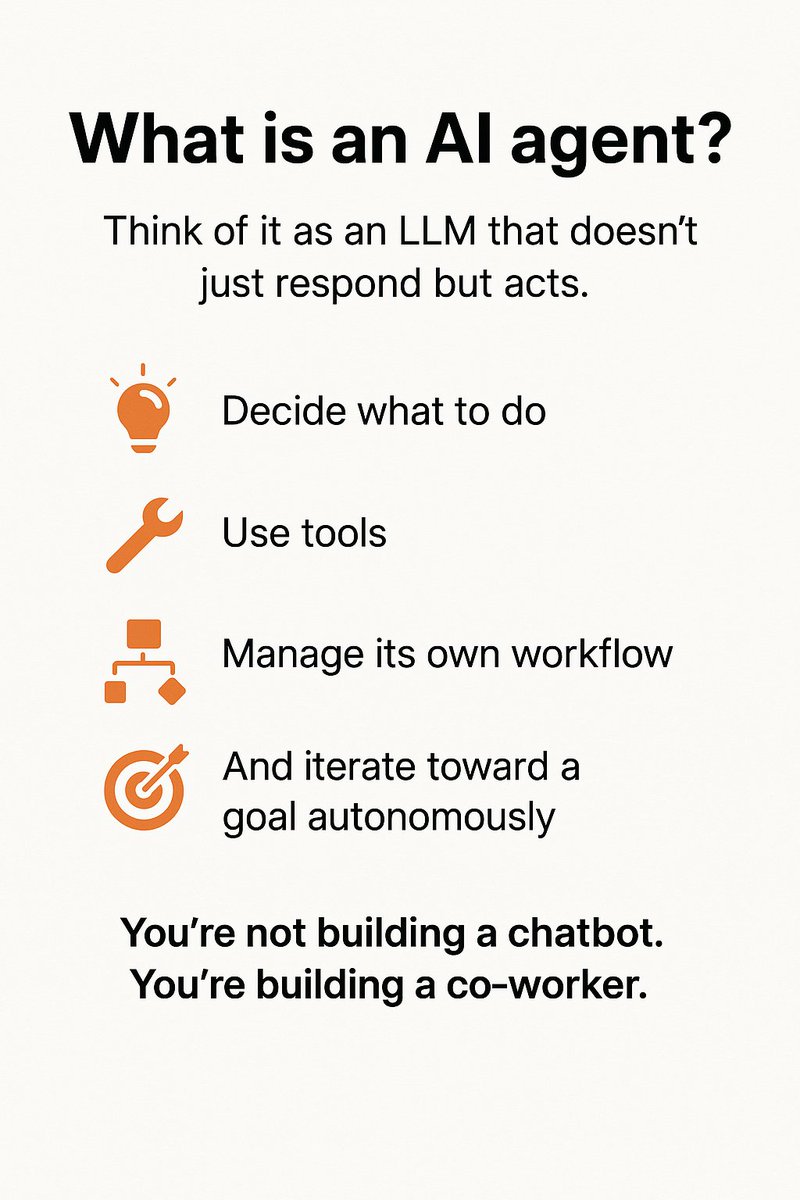If you're not getting incredible results from AI, the problem isn't the AI.
It's your prompts.
These 4 frameworks fix that problem permanently.
Here're the frameworks I use (Steal them):
It's your prompts.
These 4 frameworks fix that problem permanently.
Here're the frameworks I use (Steal them):
Today, most people prompt like this:
“Write me a marketing plan for my product.”
And then they wonder why the result feels vague, boring, and unusable.
The problem isn’t AI.
It’s your approach.
“Write me a marketing plan for my product.”
And then they wonder why the result feels vague, boring, and unusable.
The problem isn’t AI.
It’s your approach.
AI is like an engine.
Your prompt is the steering wheel.
But without a framework, you’re just spinning it randomly.
Frameworks turn prompting into a repeatable system.
Let’s break down 4 of the best: 👇
Your prompt is the steering wheel.
But without a framework, you’re just spinning it randomly.
Frameworks turn prompting into a repeatable system.
Let’s break down 4 of the best: 👇
1. APE Framework
APE = Action → Purpose → End Goal
Instead of:
“Write a LinkedIn post.”
Use APE:
“Write [Action: a LinkedIn post] [Purpose: to explain AI frameworks simply] [End Goal: so readers feel confident to try them today].”
Result? Clear. Targeted. Useful.
APE = Action → Purpose → End Goal
Instead of:
“Write a LinkedIn post.”
Use APE:
“Write [Action: a LinkedIn post] [Purpose: to explain AI frameworks simply] [End Goal: so readers feel confident to try them today].”
Result? Clear. Targeted. Useful.

2. PECRA Framework
PECRA = Persona → Example → Context → Request → Adjustments
Example prompt:
“You are a productivity coach.
Show me 3 examples of AI frameworks.
Context: audience = beginners.
Request: keep it under 200 words.
Adjust: make it friendly + engaging.”
PECRA = consistent precision.
PECRA = Persona → Example → Context → Request → Adjustments
Example prompt:
“You are a productivity coach.
Show me 3 examples of AI frameworks.
Context: audience = beginners.
Request: keep it under 200 words.
Adjust: make it friendly + engaging.”
PECRA = consistent precision.

3. OSCAR Framework
OSCAR = Objective → Scope → Constraints → Action → Reflection
Example:
“Objective: Create a study plan.
Scope: 30 days, 1 hour/day.
Constraints: for a working professional.
Action: Build week-by-week schedule.
Reflection: Suggest improvements.”
You don’t just get answers → you get refined answers.
OSCAR = Objective → Scope → Constraints → Action → Reflection
Example:
“Objective: Create a study plan.
Scope: 30 days, 1 hour/day.
Constraints: for a working professional.
Action: Build week-by-week schedule.
Reflection: Suggest improvements.”
You don’t just get answers → you get refined answers.

4. TAG Framework
TAG = Task → Audience → Goal
Example:
“Task: Write a newsletter.
Audience: busy founders.
Goal: Explain why prompt frameworks matter in under 300 words.”
AI now knows what, who, why.
That’s the difference between fluff and focus.
TAG = Task → Audience → Goal
Example:
“Task: Write a newsletter.
Audience: busy founders.
Goal: Explain why prompt frameworks matter in under 300 words.”
AI now knows what, who, why.
That’s the difference between fluff and focus.

Notice something?
All these frameworks do the same thing:
They give AI structure.
And when you give AI structure → it gives you outputs that feel human, specific, and valuable.
All these frameworks do the same thing:
They give AI structure.
And when you give AI structure → it gives you outputs that feel human, specific, and valuable.
Frameworks also make AI work for you at scale:
Want 20 tweets? Use PECRA.
Want research with critique? Use OSCAR.
Want copy tailored to an audience? Use TAG.
Want clarity in goals? Use APE.
No more “re-rolling” prompts endlessly.
Want 20 tweets? Use PECRA.
Want research with critique? Use OSCAR.
Want copy tailored to an audience? Use TAG.
Want clarity in goals? Use APE.
No more “re-rolling” prompts endlessly.
AI is powerful.
But raw power without a framework = chaos.
Once you learn to prompt with frameworks, AI goes from:
❌ hit-or-miss toy → ✅ predictable partner.
But raw power without a framework = chaos.
Once you learn to prompt with frameworks, AI goes from:
❌ hit-or-miss toy → ✅ predictable partner.
The best part?
You don’t need to memorize 100 prompts.
You just need a few frameworks you can apply to any situation.
That’s how pros get unfair results while everyone else struggles.
You don’t need to memorize 100 prompts.
You just need a few frameworks you can apply to any situation.
That’s how pros get unfair results while everyone else struggles.
Prompt frameworks are the difference between “AI feels mid” and “AI feels magical.”
Start with these 4:
1. APE
2. PECRA
3. OSCAR
4. TAG
Master them → and AI will finally deliver shockingly good outputs.
Start with these 4:
1. APE
2. PECRA
3. OSCAR
4. TAG
Master them → and AI will finally deliver shockingly good outputs.
Here's what I'm building for you...
Most people publish and hope their content resonates.
TestFeed flips that...it shows you exactly how your audience will respond before you ever hit publish.
👉 Join the waitlist here: testfeed.ai
Most people publish and hope their content resonates.
TestFeed flips that...it shows you exactly how your audience will respond before you ever hit publish.
👉 Join the waitlist here: testfeed.ai
I hope you've found this thread helpful.
Follow me @Yesterday_work_ for more.
Like/Repost the quote below if you can:
Follow me @Yesterday_work_ for more.
Like/Repost the quote below if you can:
https://twitter.com/1909092495734235136/status/1960280423592014221
• • •
Missing some Tweet in this thread? You can try to
force a refresh











